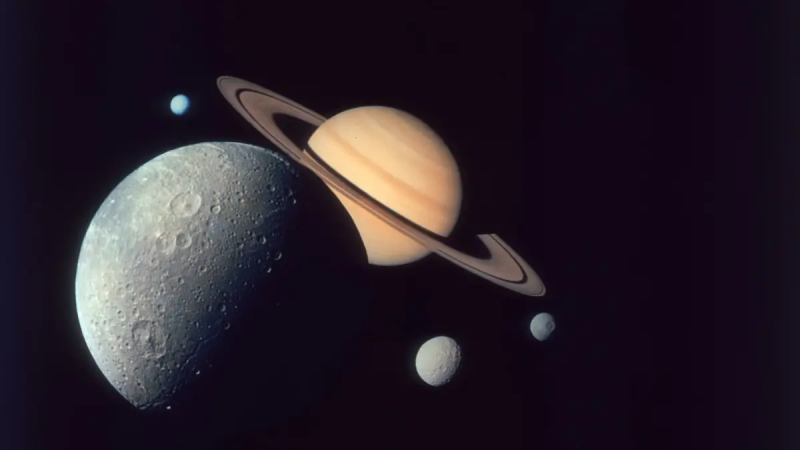NASA publishes never-before-seen photos of 'ravioli' moon orbiting Saturn
The National Aeronautics and Space Administration (NASA) dropped never-before-seen photos of one of Saturn's moons while comparing them to well-known food dishes.
"Ravioli, pierogi, empanada... What do you see? No wrong answers," NASA posted on its Instagram account Monday, accompanied by pictures of Pan, the innermost of Saturn's moons.
The photos, which were taken from the Cassini spacecraft, show the unique moon in a new level of detail.
MOON IN SOLAR SYSTEM HAS ELEMENTS NEEDED TO SUPPORT LIFE: SCIENTISTS

These images of Pan, Saturn's innermost moon, were taken from different perspectives: The left image appears to be a view from above the moon while the right image seems to be from below. The moon has a flat ridge around its midpoint and lines across its surface. (NASA / JPL-Caltech / Space Science Institute)
According to the space agency, the ridge around the equator of Pan has similar characteristics to Atlas, another moon that orbits Saturn. That ridge gives Pan its unique "dumpling" shape, according to NASA.
Pan orbits Saturn from inside a gap in one of the planet's rings, the post explained, making an orbit around the planet every 13.8 hours at an altitude of 83,000 miles.
The two images show how the Cassini spacecraft's perspective of Pan changed as it passed within 15,300 miles of the moon, the craft's closest ever encounter with Pan.

This montage shows Saturn and its moons Dione, front, Tethys and Mimas, right, Enceladus and Rhea, left, and Titan, distant top. (Space Frontiers / Hulton Archive / Getty Images / File)
CLICK HERE FOR MORE US NEWS
Pan was originally discovered by M.R. Showalter "using images taken by the Voyager 2 spacecraft nine years earlier," according to a page about the moon on NASA's website.
According to Space.com, Saturn has 145 moons that are currently recognized by the International Astronomical Union. That number rose significantly in May this year as 62 new moons were discovered by a team of scientists led by Edward Ashton.
While most of Saturn's moons were originally named for Greco-Roman Titans, the discovery of many new moons forced scientists to start using names from other mythologies such as Gallic, Inuit and Norse stories, according to NASA.

Saturn has 145 moons that are currently recognized by the International Astronomical Union. (HUM Images / Universal Images Group via Getty Images / File)
CLICK HERE TO GET THE FOX NEWS APP
"Pan, a satyr (a creature resembling a man with the hind legs and hooves of a goat), is a Greek god of nature and the forest," NASA explains on its website.
Disclaimer: The copyright of this article belongs to the original author. Reposting this article is solely for the purpose of information dissemination and does not constitute any investment advice. If there is any infringement, please contact us immediately. We will make corrections or deletions as necessary. Thank you.







